How to Decorate With Farrow and Ball's 'Railings' — The Secret to Making This Classic Paint Color Work in Your Home
Not quite black, not quite blue, the beauty of this paint shade lies in a refined middle ground. But how should you use it in your rooms?
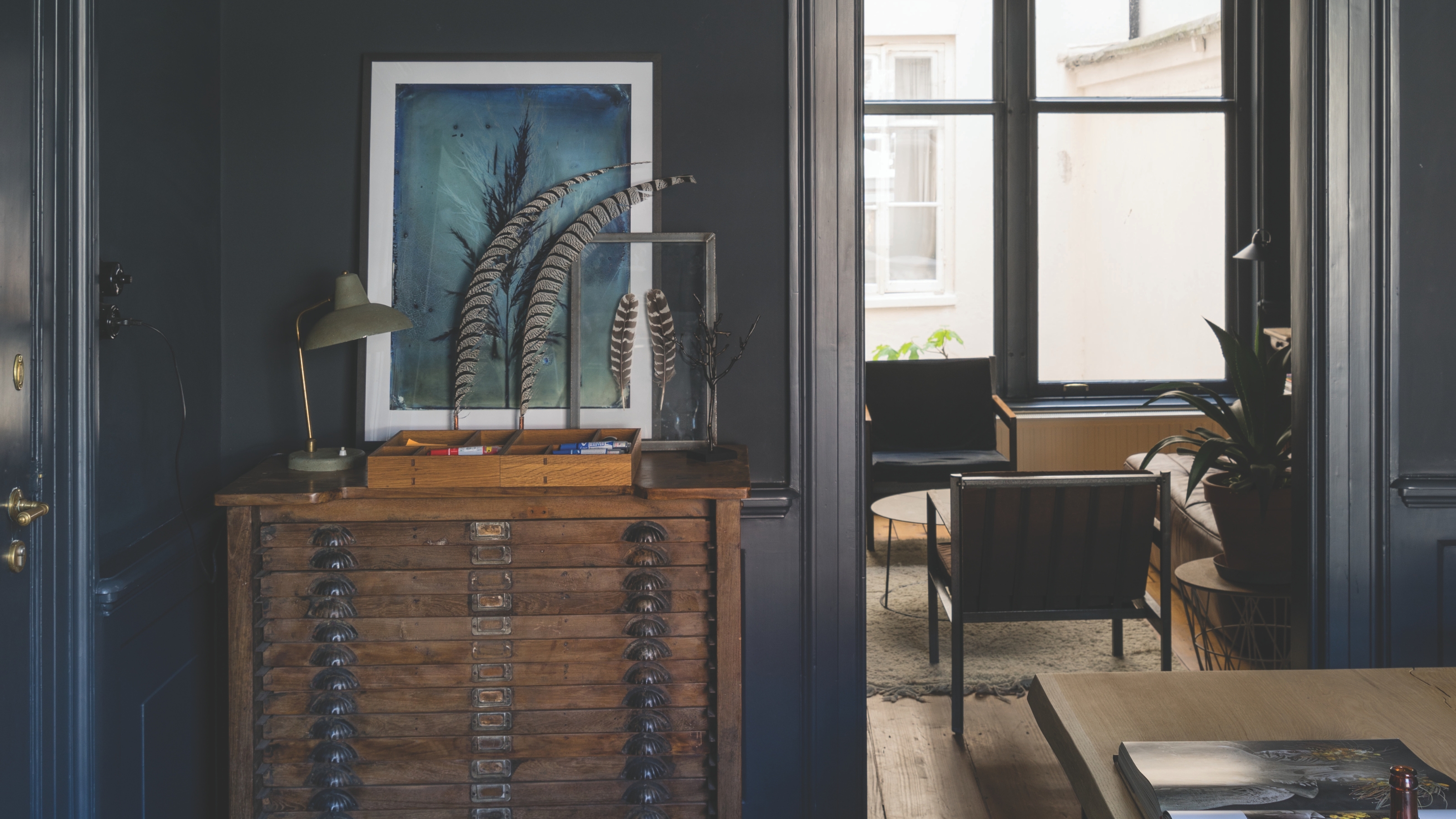

The age-old paint color question: Should I paint my walls a light neutral or something with more saturation and mood? While more color and boldness may be daunting at first, my opinion is that it always pays off in the end. A home office painted in a dark navy? Dark academia is suddenly the aesthetic. A dining room that pairs a deep gray with warm wood? Nothing is more elegant.
The moral of the story is: when you're looking to create a timeless and elegant atmosphere, don't settle for a millennial gray or stock black — a more interesting counterpart will always do more for your space. Farrow & Ball's Railings is among the best paint colors to pursue. In some lights, it could be mistaken for a dark gray, but don't be fooled, Railings is much more nuanced than that. Hailed as one of Farrow and Ball's most popular paint colors, Railings comes across as a rich charcoal color with undertones of muted blue making it appear almost navy in some lights.
So, how do you use this color? And where in your interiors is it best suited? I've asked a few interior designers who have experience with this color for their best advice.
What Makes Farrow and Ball's Railings So Popular?
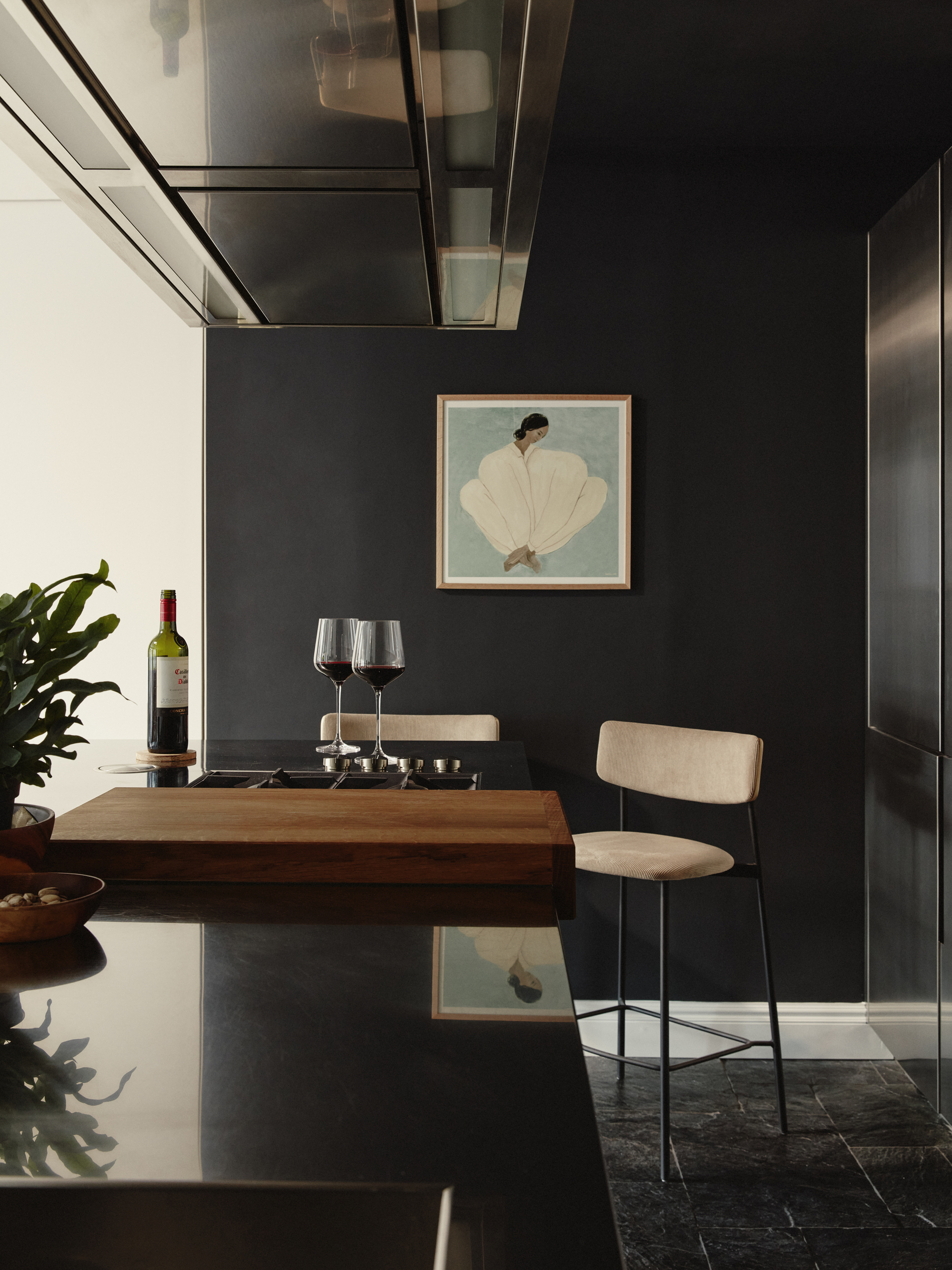
Contemporary design has steered our homes away from dull grays, harsh blacks, and uninspiring neutrals. Neutral and monochrome color palettes have been elevated, adjusted, and refined to align with the modern era of embracing color and creativity. A shade that offers a bit more personality, like Railings, stands out as one of the best black paints to use, as it reveals more than meets the eye.
My biggest question when researching the shade was whether or not it was considered a navy. Interior designer and home renovator, Rachael Peters, explains, "It’s close to black but much softer and has subtle blue undertones which for me make it the perfect shade of Navy." However, I would argue that the beauty of Railings is its adaptability. Each interior it inhabits affects whether the color leans more blue, gray, or black.
Florida-based interior designer and founder of Laure Nell Interiors, Laetitia Laurent, says, "Railings is one of those colors that surprises people. It looks black at first, but there’s this deep, almost inky blue undertone that gives it a softness. It’s bold, but not in a way that feels stark or heavy."

Laetitia studied design, art, and history in Paris, and earned her master’s degree in history and international relations from the Sorbonne. Laetitia's design often leans toward a modern aesthetic as she uses European principles of form and proportion as her guide.

Price: £5.50
Size: 100ml Sample Pot
You can see the charcoal and blue tones in this sample of Railings. It is a lovely alternative to a stock black, gray, or white.
Which Rooms Should You Use Railings in?
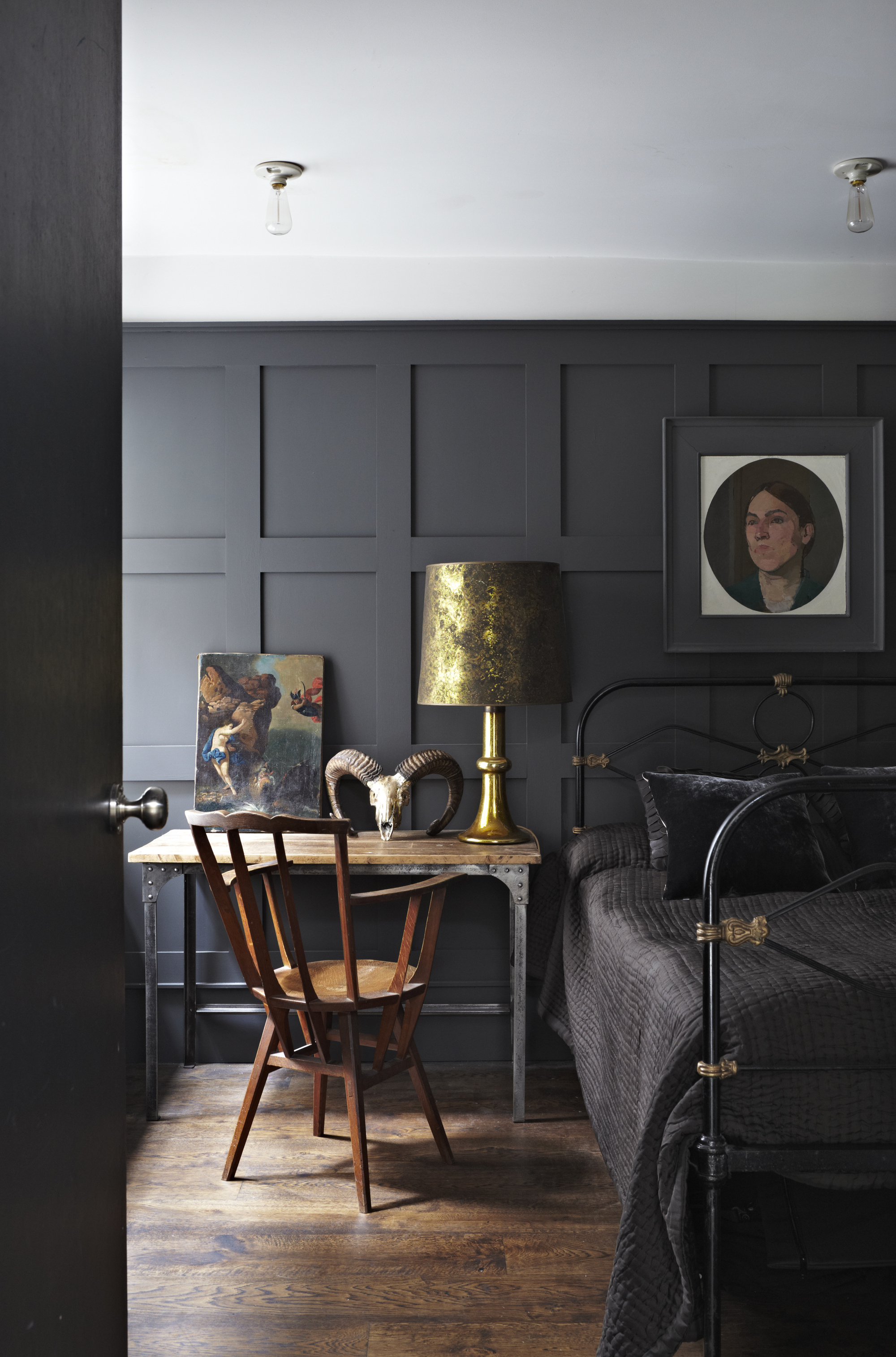
This bedroom uses Railings in a color-drenched style creating a cozy, cocoon-like effect.
Railings' muted tones grant it more grace than other dark color trends, making it a paint color that easily adapts to any space. Rachael says, "I’ve used it on a kitchen island which was a real feature against the lighter wall units. I’ve also used it on wall paneling in a powder room where I teamed it with a heavily patterned wallpaper to create a dark, dramatic space." Railings works harmoniously with both minimal and eccentric aesthetics, and it's a stunning dark color for small rooms.
But why does a color so seemingly close to other well-known favorites like navy and black feel so much more nuanced? London-based interior designer and founder of Anna Moller Design Studio, Anna Moller, says Railings can morph into different moods and aesthetics because "it's the perfect match between elegance and strength. Industrial, Wabi Sabi, Scandi, English country home — there is no limit to where it will work."
In historic homes, it has that richness that makes architectural details stand out — it feels classic like it’s always been there. However, in something like a modern living room idea, Railings can add a crisp, sophisticated contrast. Laetitia adds, "I’ve seen it used on walls, cabinetry, trim — it just works."
"Our perennial favorite, Railings, creates a great backdrop to many a living space," explains Patrick O'Donnell, color expert and brand ambassador for Farrow & Ball. He says, "Your artwork will register with renewed clarity, you will feel cocooned when bathed in ambient lighting at night and colors will pop against it — think chartreuse yellow or bright emerald sofas in velvet or wool."

Working across London and Surrey, Anna creates rich, elegant interior spaces inspired by the natural world. Anna is trained in Interior Architecture, and this has led her to a passion for what she calls the 'canvas' — the floors, ceilings, natural light, and the flow of a building. Anna worked at a handful of highly prestigious Interior Design studios before founding Anna Moller Designs.
What Colors Go With Railings?
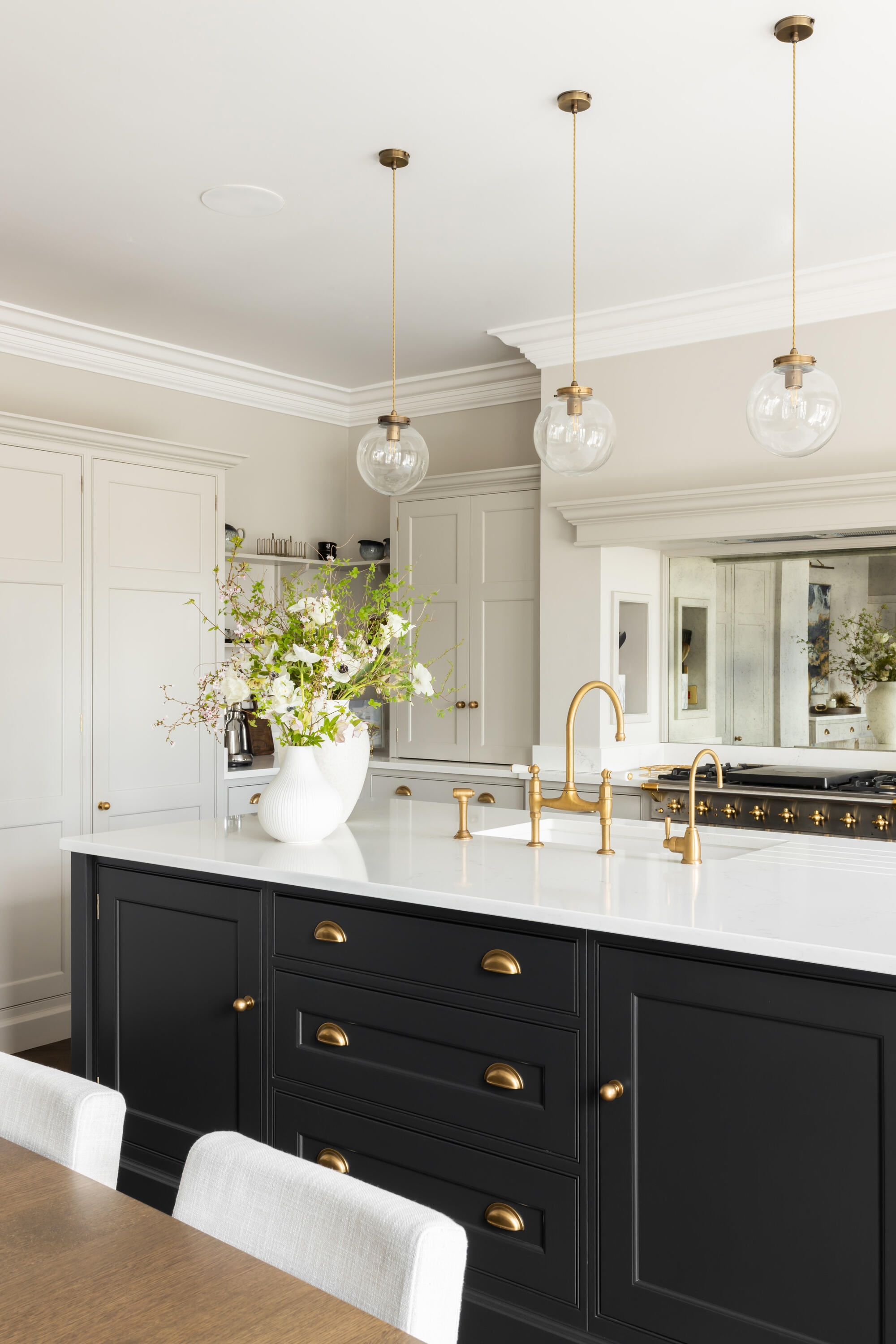
The warm off-white on the walls of the kitchen brings out the warmer gray undertones in Railings rather than the blue. This makes the paint color have a sophisticated, darker feel in the room.
As for what colors to use with Railings, Laetitia says, "I’d pair it with warmer neutral paint colors, nothing too bright or stark. Farrow & Ball's Dimity or White Tie will keep it feeling rich." And if you want something a little unexpected, "muddy greens or ochres give it that layered, European feel," says Laetitia.
Aged brass next to it will highlight the luxurious yet traditional feel of the shade and make your space feel curated and considered. How you choose to decorate with Railings will transform the room — it's all in the details. But find comfort in knowing that Railings is a color that makes room for creative experimentation. Anna says, "Because it’s hard to define as blue, black, or grey, it sits in its own lane and therefore doesn’t demand a rigid style."
Patrick recommends, "For woodwork, either play with the crispness of our purest white, All White or pull out the nuanced blue in Railings by teaming it with a lighter blue color, like Borrowed Light."

Patrick has been bringing his eye for color and design to Farrow & Ball since 2012. Over that time, he’s worked in showrooms for the brand and people’s homes to transform countless spaces. Patrick has an ISVA Fine Art & Chattels qualification and has studied specialist paint decoration at the Leonard Pardon School.
There are so many colors that go with black and colors that go with navy blue, and with Railings being a kind-of-black-kind-of-navy shade, it will go with anything. Incorporating a color like this in your home is all about creating drama while keeping the space liveable and cozy. Ready to pull out the paintbrushes?
Be The First To Know
The Livingetc newsletters are your inside source for what’s shaping interiors now - and what’s next. Discover trend forecasts, smart style ideas, and curated shopping inspiration that brings design to life. Subscribe today and stay ahead of the curve.

Olivia Wolfe is a Design Writer at Livingetc. She recently graduated from University of the Arts London, London College of Communication with a Masters Degree in Arts and Lifestyle Journalism. In her previous experience, she has worked with multiple multimedia publications in both London and the United States covering a range of culture-related topics, with an expertise in art and design. At the weekends she can be found working on her oil paintings, reading, or antique shopping at one of London's many vintage markets.
-
 Burl Wood Decor Is 2025’s Most Coveted Comeback — Here’s How to Get the Storied Swirls for Less
Burl Wood Decor Is 2025’s Most Coveted Comeback — Here’s How to Get the Storied Swirls for LessIrregularity is the ultimate luxury, but you don’t need an antiques dealer to find it
By Julia Demer Published
-
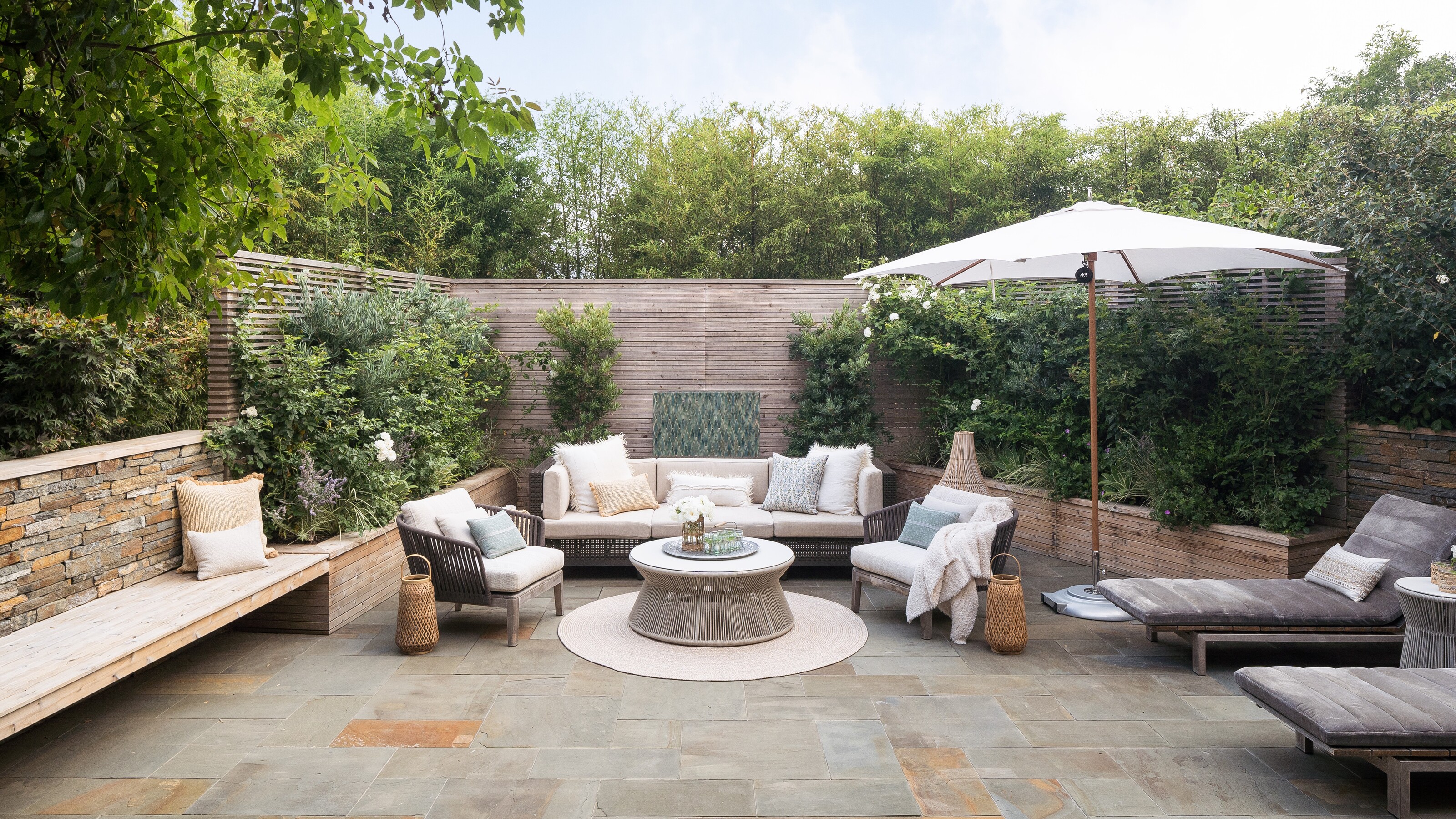 5 Garden Features That Instantly Add Value to Your Home — While Making Your Outdoor Space More Practical, too
5 Garden Features That Instantly Add Value to Your Home — While Making Your Outdoor Space More Practical, tooGet to know all the expert tips and tricks for making your backyard a standout selling point for your home.
By Maya Glantz Published
-
 5 Problems With Painting Your Walls White That No-One Ever Talks About (Until Now)
5 Problems With Painting Your Walls White That No-One Ever Talks About (Until Now)White is the easiest neutral to work with...right? Interior designers explain why this shade is actually more complex than it may seem
By Olivia Wolfe Published
-
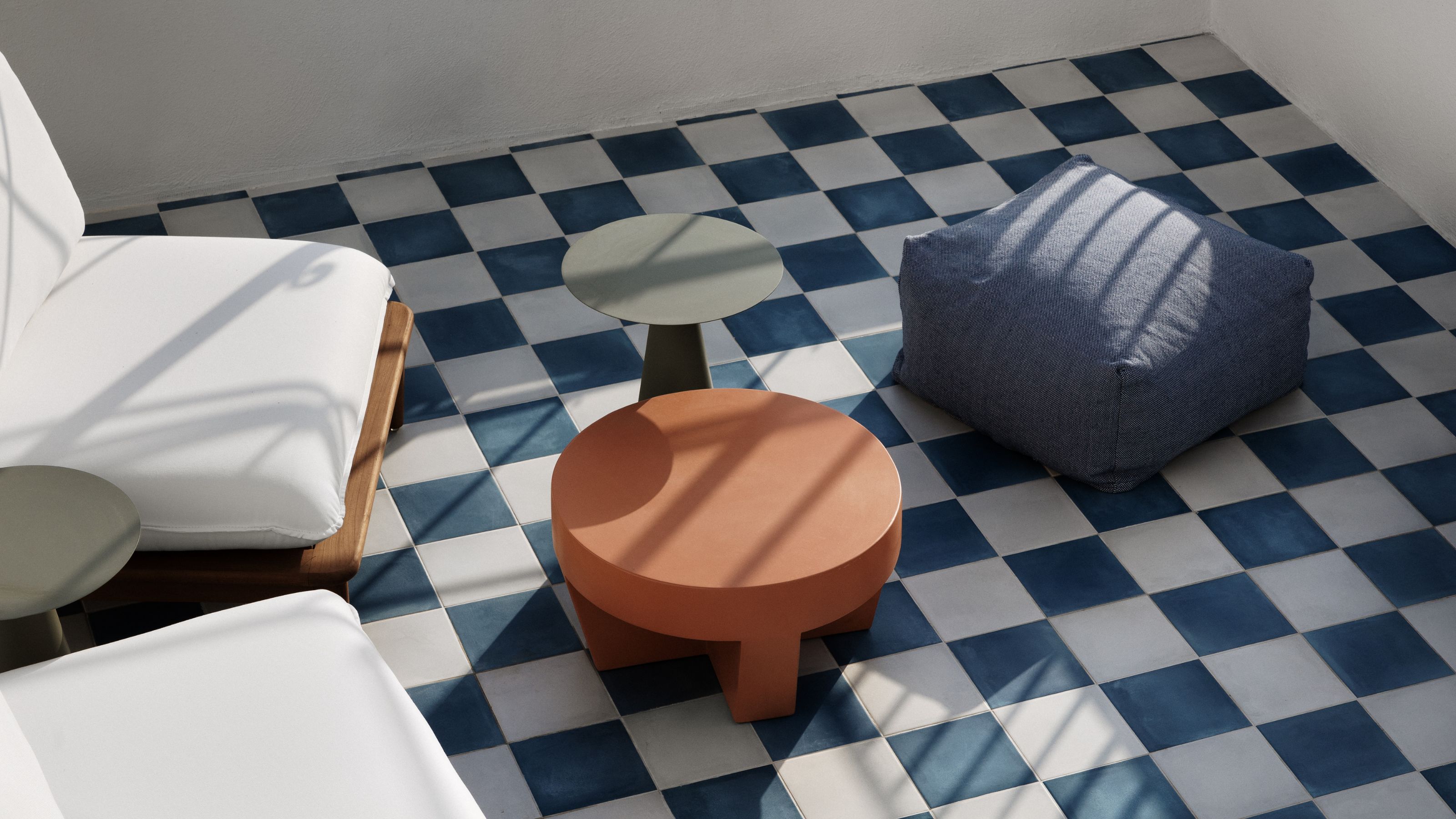 5 Mistakes That Are Making the Blue Details in Your Room Feel Old-Fashioned — And How to Rectify Them
5 Mistakes That Are Making the Blue Details in Your Room Feel Old-Fashioned — And How to Rectify ThemBlue is a timeless shade, no doubt, but use it in the wrong space or in the wrong way, and it can make a space feel, well... a bit blue
By Kelly Hushin Published
-
 5 of the Best Navy Blue Paint Colors That Designers Love — And How to Use Them
5 of the Best Navy Blue Paint Colors That Designers Love — And How to Use ThemNavy blue has timeless appeal and can feel both modern yet classic, but what are the designers' favorite paints?
By Oonagh Turner Published
-
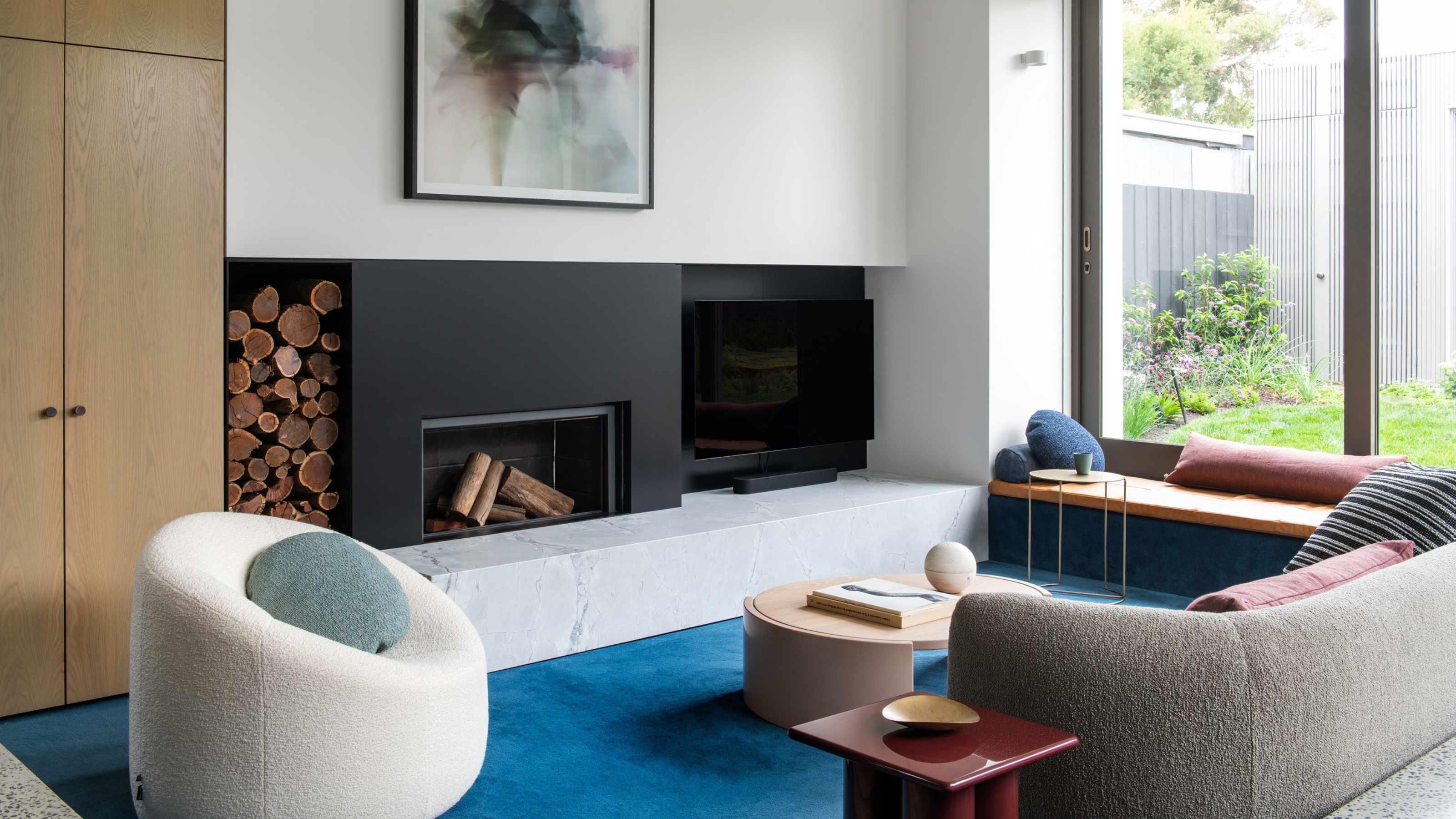 Should Your Carpet Be A Darker Color Than Your Walls? How to Make This Bold Look Work
Should Your Carpet Be A Darker Color Than Your Walls? How to Make This Bold Look WorkNot every room can get away with a carpet that is darker than the walls; Designers share when and where this combination works best
By Olivia Wolfe Published
-
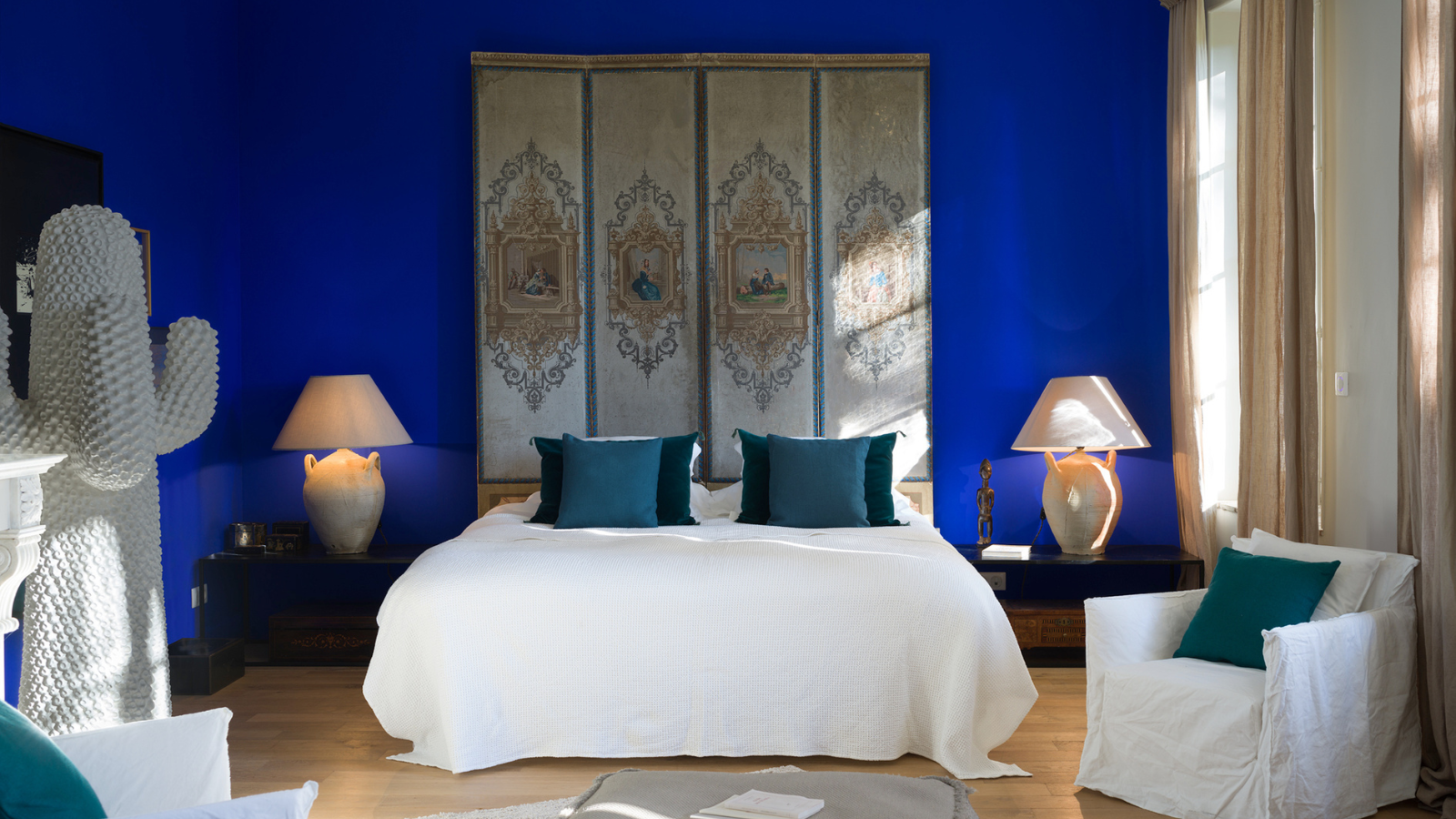 What Actually Is Yves Klein Blue? A Short History of This Iconic Color, and How to Decorate With It
What Actually Is Yves Klein Blue? A Short History of This Iconic Color, and How to Decorate With ItExplore “the most perfect expression of blue” and how to free this pigment in your home
By Camille Dubuis-Welch Published
-
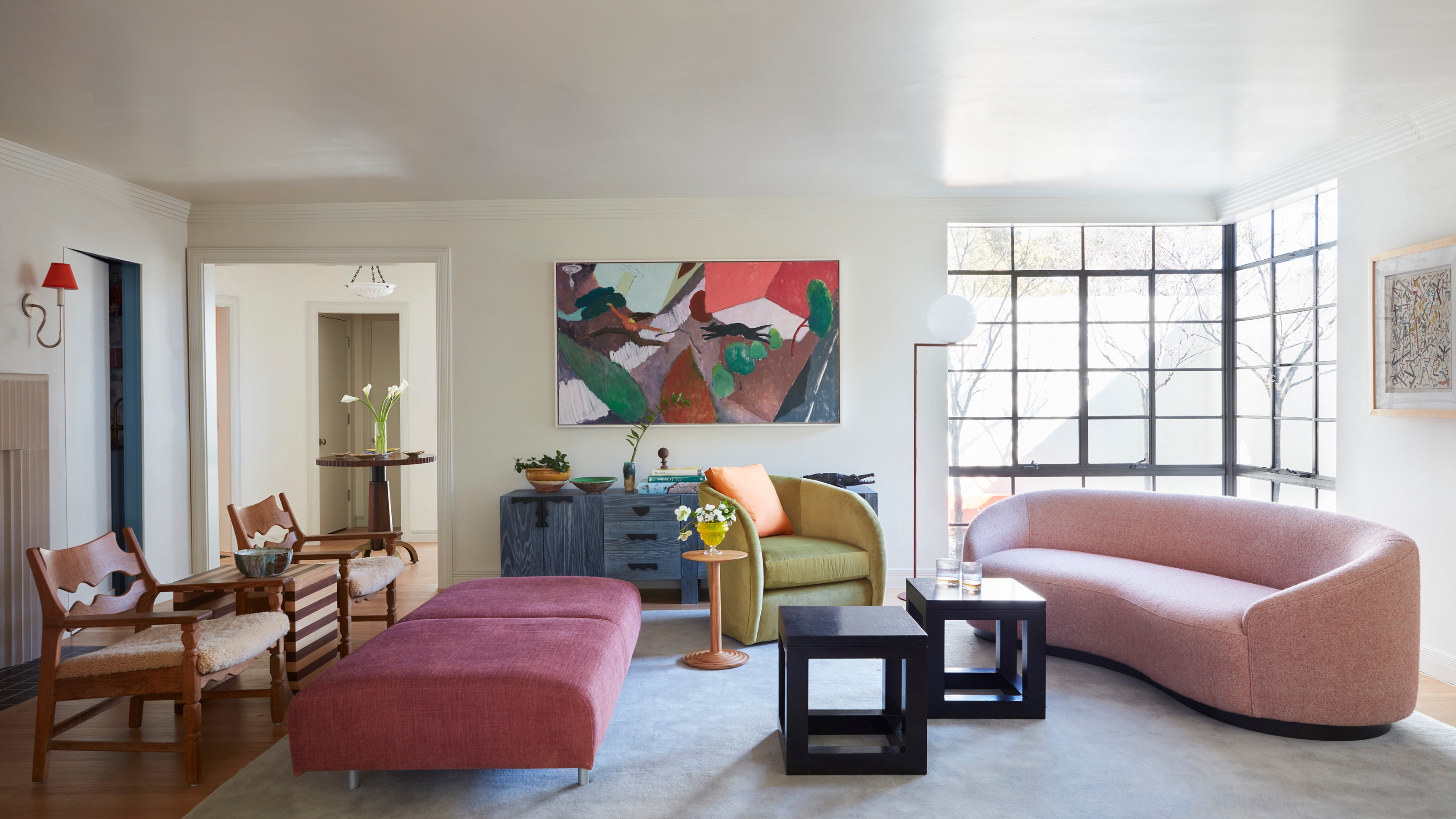 Do Pink and Green Go Together in Interiors? A Professional Color Consultant's Verdict
Do Pink and Green Go Together in Interiors? A Professional Color Consultant's VerdictHow to make pink and green color combinations work for more contemporary interior schemes
By Olivia Wolfe Published
-
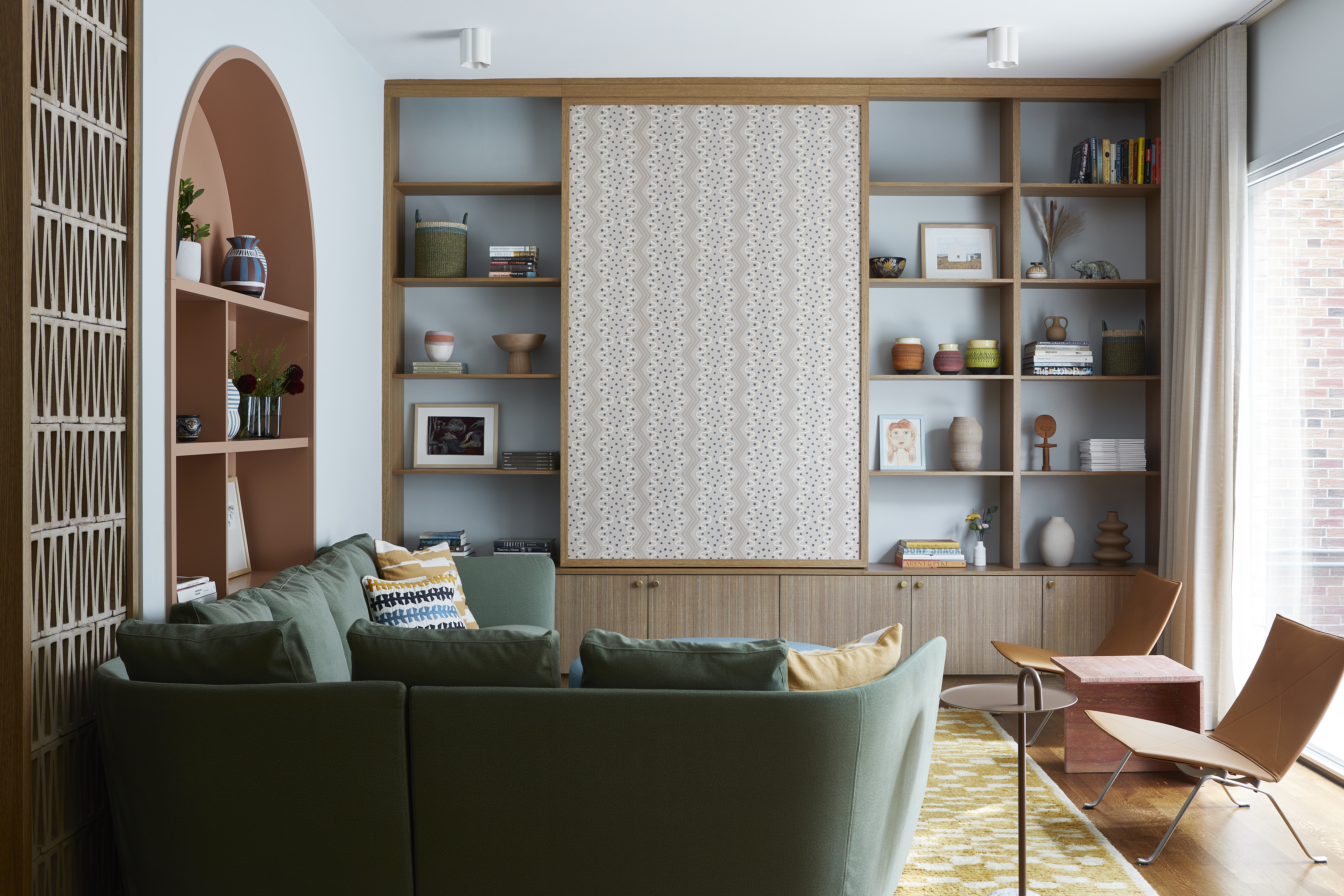 The 'Grown-Up' Way to Decorate With Light Blue — This Shade Shouldn't Just "Be Resigned to the Baby's Room"
The 'Grown-Up' Way to Decorate With Light Blue — This Shade Shouldn't Just "Be Resigned to the Baby's Room"We explore how to bring the lighter intonations of blue into your home in a contemporary and thoughtful way
By Amy Moorea Wong Published
-
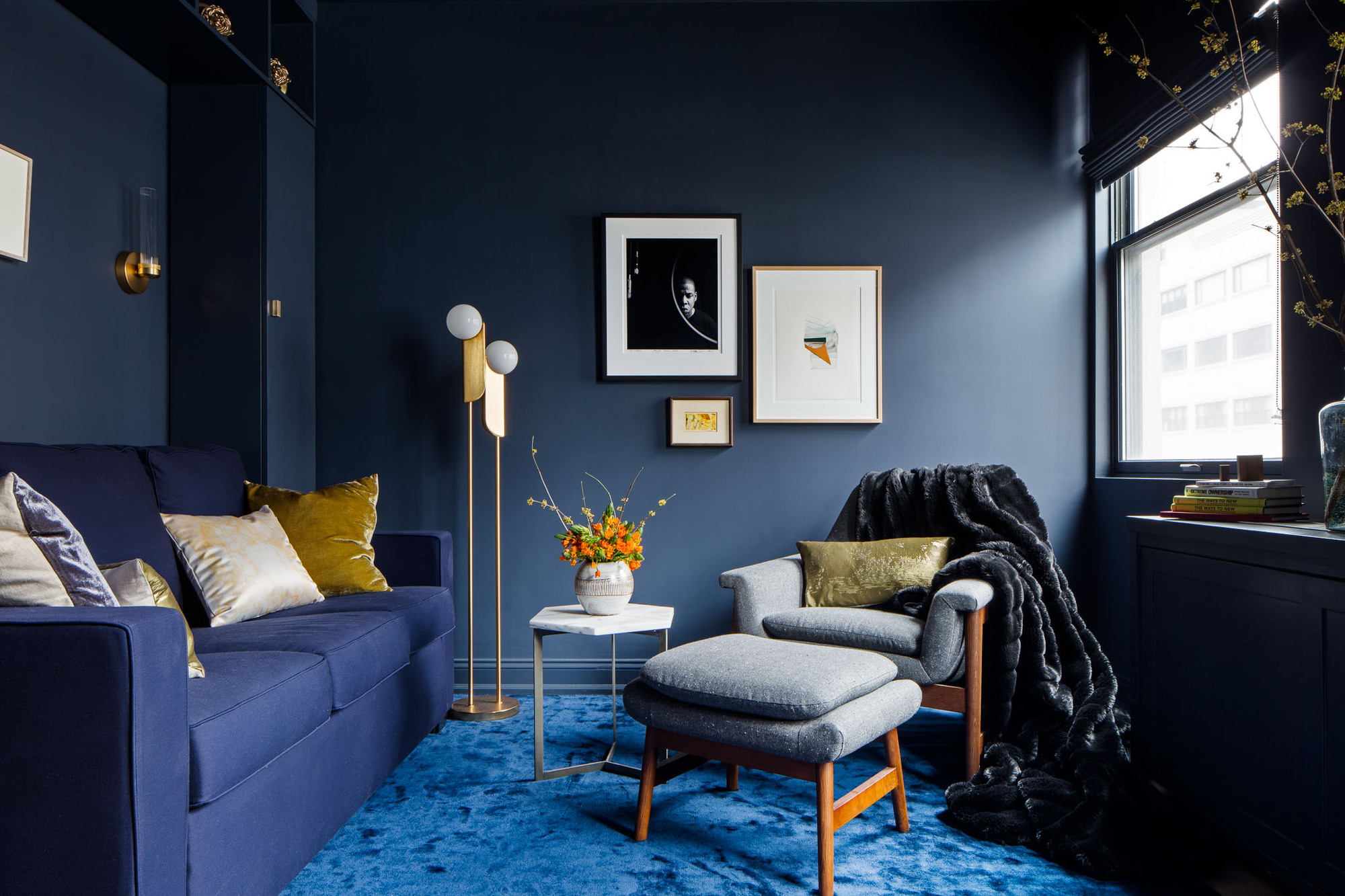 3 Times You Should Never Paint a Room Blue, According to a Designer — "Sometimes, It's Harder to Work Around"
3 Times You Should Never Paint a Room Blue, According to a Designer — "Sometimes, It's Harder to Work Around"Though widely beloved, blue is not always best when it comes to your walls. Here's when not to choose it for a room
By Olivia Wolfe Published


